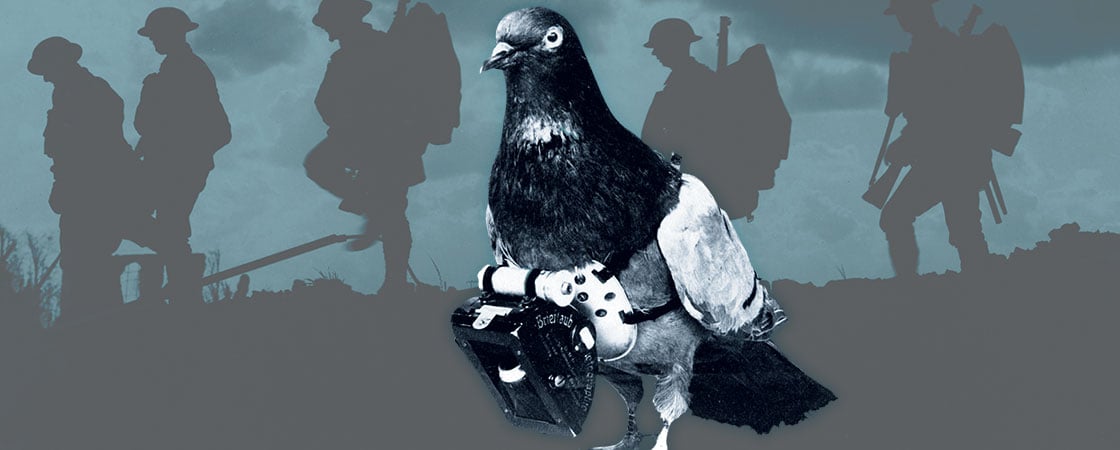The American soldiers were sure they were doomed.
It was October 1918, near the end of World War I. More than 135 countries were part of this brutal war. Battles took place around the world, leaving millions of people dead by the end of the war.
Now, in a dark, rainy forest in France, hundreds of American troops were in trouble. The men were surrounded by enemy German soldiers. Bombs rained from the sky. The Americans needed help. Their only hope was to get a message out to their leaders.
In October 1918, a group of American soldiers were in big trouble. They were trapped in a rainy forest in France. They were fighting in a brutal war called World War I. Bombs were being dropped down on the forest.
The American soldiers needed to get a message to their leaders. But there were no phones or radios at the time. Luckily, there was a hero who had been trained for this exact moment. She was a pigeon named Cher Ami.
The American soldiers were sure they were doomed.
It was October 1918, near the end of World War I. More than 135 countries were part of this brutal war. Battles took place around the world, leaving millions of people dead by the end of the war.
Now, in a dark, rainy forest in France, hundreds of American soldiers were in trouble. The men were surrounded by enemy German soldiers. Bombs rained from the sky. The Americans needed help. They had to get a message out to their leaders.
The American soldiers were doomed.
It was October 1918, not long before the end of World War I. This was a war more brutal than any before in history; it would leave 17 million people dead and pull more than 135 countries, including the United States, into battles around the globe.
Now, in a dark, rainy forest in northeastern France, several hundred American troops were in a fight for their lives. The men were surrounded by enemy German soldiers. Machine guns rattled. Bombs rained from the sky. The Americans needed help. Their only hope was to get an urgent message to their leaders, 25 miles away.

